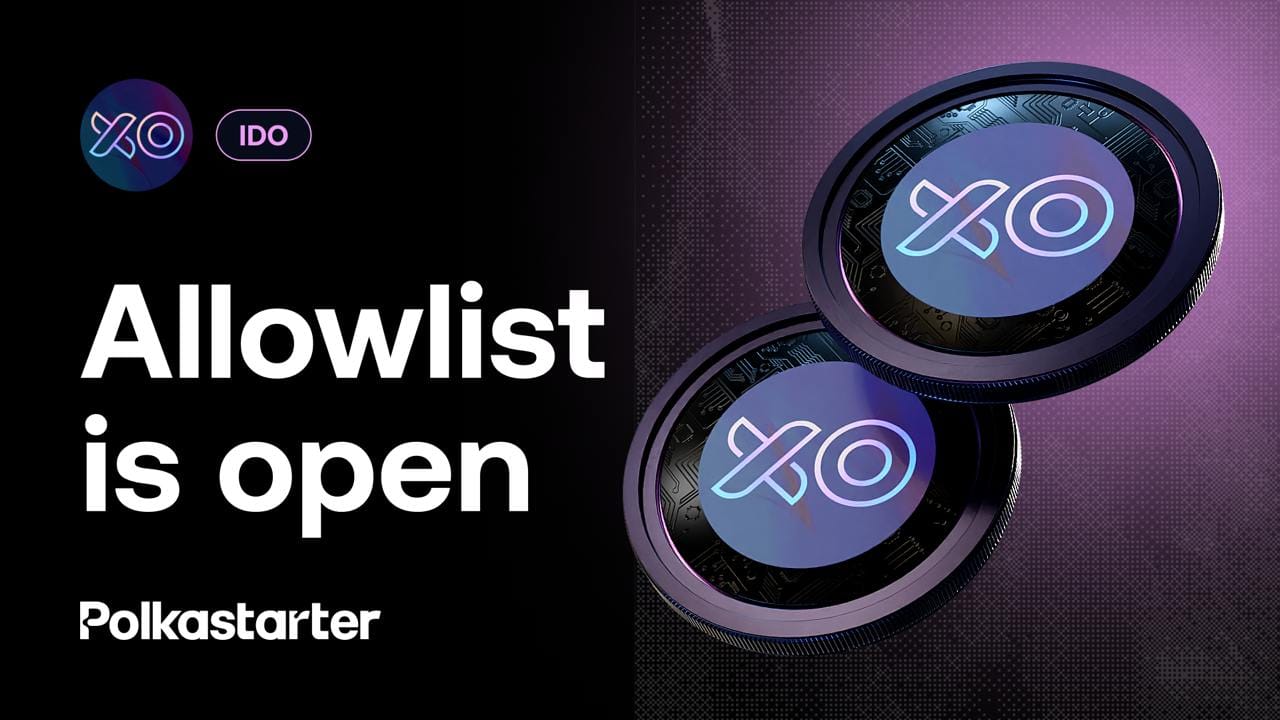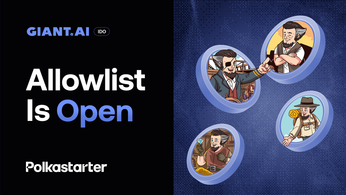
Poolside with Polkastarter 04: Navigating the Bear Market Recap
On our latest Poolside with Polkastarter episode, we shared experiences and thoughts on the current crypto bear market.
We got together with Miguel Leite, Polkastarter Co-Founder, João Leite, Head of Research at Polkastarter, Itai Elizur, Partner and COO at MarketAcross and Founder of Crypto Pragmatist, Jack Niewold to explore the current bear market conditions and share previous experiences.
Let’s recap the main points from this talk. In case you missed the live session, don’t worry full Poolside with Polkastarter episode coming soon on Spotify.
Bear market experiences from the past
Miguel started by sharing his own experience from the previous crypto bear market. According to Miguel, the domino effect of a bear market is almost always the same: Twitter influencers go silent, companies fail, founders give up and people are quick to jump ship.
The reality is that those who have the patience and foresight but also funds to stay in the market can benefit the most once things pick up again.
Bear markets create opportunities and what a better example than Polkastarter, an idea that was born from a similar situation in 2019.
Itai’s input on the topic was very insightful as he proposed that this is the time for people to put their faith in ecosystems and projects they believe in without getting too high or too low from market conditions. According to Itai, this might not even be the worse we’ve seen from the bear market. Still, the opportunities are there and staying calm under pressure can determine investment success.
João’s experience was a bit different as he joined the industry at a time when everything was about rainbows and butterflies. Reality didn’t take long to settle in, costing him almost 90% of his investment portfolio. Could have João bailed to do as much damage limitation as possible? Sure, and nobody would have faulted him for that. Instead, he chose to regroup, recuperate and see things differently.
When the market is flourishing people tend to act instinctively and irrationally. What the bear market does is get you to assess projects more carefully and be more vigilant of the details surrounding a project. People shouldn’t be afraid of the bear market - it’s where the noise dies down giving you the opportunity to learn more. You should use it as the foundation for the next bull cycle.
Jack’s input highlighted the altering nature of bearish market conditions and how they essentially change the landscape of an entire sector. From his list of Top 200 cryptos in 2017, only 40 have made it to 2022, showing how market ups and downs are the true testaments to a project’s longevity.
What do projects need to do to survive the current bear market?
Itai’s view on this was that founders should go big and not be discouraged by the state of the market. If there is anything we can take from treasury management in previous years is that it wasn’t sophisticated enough or accounted for the possibility of a crisis. Now, founders know better and should treat their crypto projects as traditional VCs.
Jack’s advice was to go back to the fundamentals and focus on their product. Sure, building a product when the price is soaring through the roof makes the process more fun but price shouldn’t affect effort and focus. Viable products have better chances to make through the bear market and this should always be the foundation of any project.
Evaluating numerous projects on daily basis, João pointed to the direction of treasury management as one of the most important elements when trying to survive a bear market crisis. You need to be able to pay salaries and keep the whole project machine going. For good or bad, what keeps companies in the business is cash flow and bad management can lead even the most promising projects and products to go bankrupt.
Cost-cutting exercises are necessary during challenging times according to João. In the midst of bull cycles, everyone spends excessively and functions like marketing get a big chunk of the budget. When things get tight, you need to keep costs as low as possible in order to weather the storm.
Another important point made by João is that bear markets pose the perfect opportunity to build your community. During bull cycles, people are not really interested in the usability of the product. Instead, they want to use it as a vehicle to make money. A real community is made of people who actually care and use your product. Now, discussions of prices and profit have gone silent and what remains are the people who show a real interest in the project.
The same goes for networking. In a bull market, conditions are more opportunistic. In a bear market, people you encounter are builders and creators who are interested in rebuilding the sector from the ground up. Their intentions are usually more honest.
On the retail investor side, what’s the best course of action in this market?
According to Miguel, when you stumble upon a project with real substance and potential, its value does not change based on the wider market conditions. As an investor, you should always put your money where you feel and think it’s worth it.
If anything, the bear market presents a better opportunity to invest with the prices and interest being so low. Take the time to consolidate, learn and investigate projects. Think of crypto projects as businesses. If there is viability, future, and potential.
From João's point of view, you always need to assess your decisions and determine what you did right and what you did wrong. Investors need to be astute students of the game and bear markets, as mentioned above, give you that opportunity. Take a step back and see what parts of your investment strategy and portfolio you can improve.
Keep in mind that some projects might have the bad luck to launch during a bear market. That does not mean they are bad projects. It means that they were unlucky in their timing. Keep a close eye on them, get involved, do your due diligence and learn as much as you can about them.
Where does this cycle leave us over the next couple of months?
According to Miguel, the only thing we can do to prepare for the future is to learn from the past. At Polkastarter, the team is already preparing for the next bull cycle but keeping the burn rate under control, saving where they can as well as perfecting their product.
The same goes for retail investors. If they believe in the vision of crypto, they should stay in the market in some capacity.
Using the example of Matic and how it survived the last bear market, Itai picked up on the fact that this time period presents an opportunity to invest in undervalued assets. Look at the macro of the industry and don’t be short-sighted.
João’s take on the future impact of this recession had more to do with NFTs. He believes that we will see more use cases for NFTs in the future, opening up new opportunities.
Final thoughts
Don’t forget that most money and innovation are made in bear markets. It’s a time for research, education and community-building. Invest in things you like, are interested and well-versed in. It’s much easier to follow the evolution of a project you care about rather than jump on the bandwagon of projects that seem cool during bull cycles. Keep in mind that bear market “survivors” usually get rewarded.
Sure, losing money is never fun but unfortunately, is a real part of investing and building something new and meaningful.
About Polkastarter
Polkastarter is the leading decentralized fundraising platform enabling crypto’s most innovative projects to kick start their journey and grow their communities. Polkastarter allows its users to make research-based decisions to participate in high-potential IDOs, NFT sales, and Gaming projects.
Polkastarter aims to be a multi-chain platform and currently, users can participate in IDOs and NFT sales on Ethereum, BNB Chain, Polygon, Celo, and Avalanche, with many more to come.
Stay tuned for more upcoming IDOs
Website | Twitter | Discord | Telegram | Instagram | Newsletter | YouTube | Spotify
Polkastarter Blog - Latest Polkastarter News & Updates Newsletter
Join the newsletter to receive the latest updates in your inbox.





